The Importance of Container Lashing for Ship
In the world of shipping, safety is paramount. One key aspect of this safety is lashing. Lashing, in the context of shipping containers, is a critical process. It involves securing containers to the ship to prevent movement during transit.
Without proper lashing, containers can shift or even fall overboard. This can lead to loss of cargo, damage to the ship, and even maritime accidents. But lashing is not just about safety. It also plays a vital role in maintaining the efficiency and success of shipping operations.
A well-executed container lashing plan can speed up loading and unloading operations. It can also reduce the risk of delays caused by accidents or cargo loss.
Moreover, lashing is subject to international regulations. Shipping companies must comply with guidelines set by organizations like the International Maritime Organization. Non-compliance can result in hefty fines and damage to the company's reputation.
In this article, we will delve deep into the importance of lashing in shipping containers. We will explore the technical aspects, the best practices, and the systems used in the industry.
Whether you work in logistics, deal with maritime safety, or are just interested in shipping, this guide is for you. Join us as we navigate the world of container lashing for ship. Let's set sail.
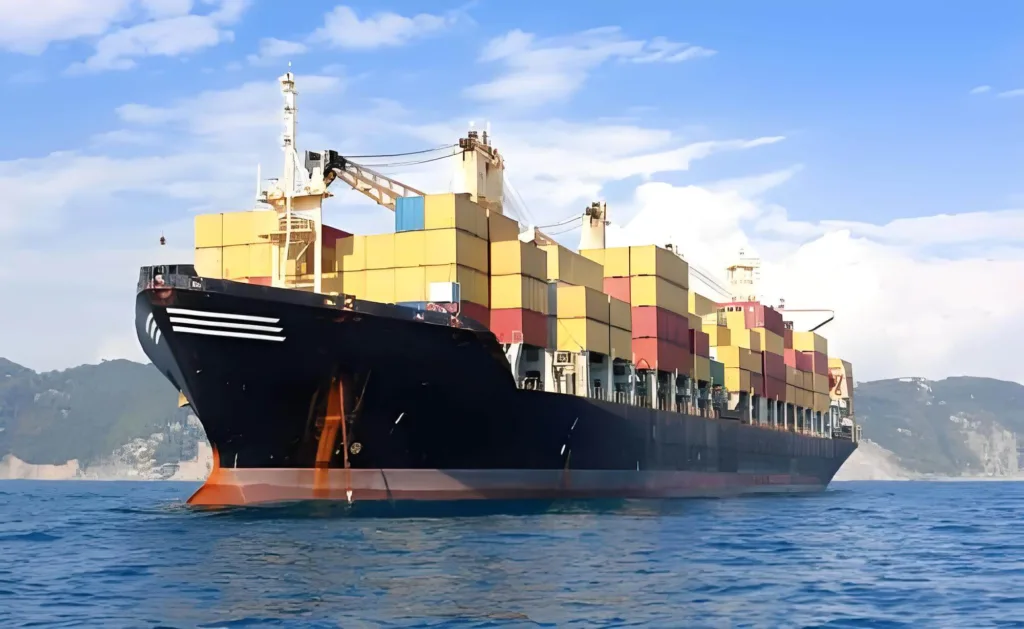
Understanding Container Lashing
Before we delve into the intricacies of lashing, let's first understand what it is.
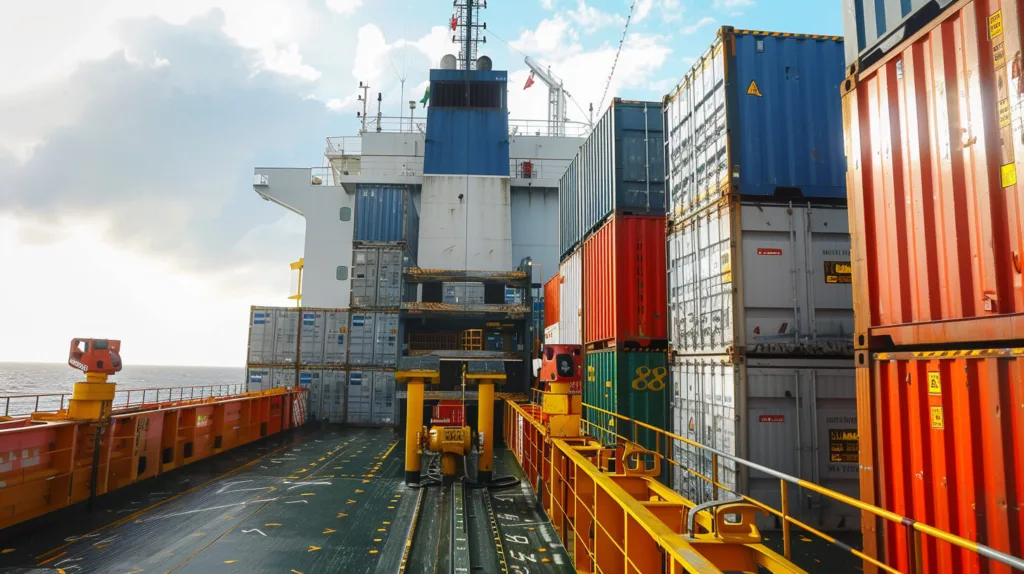
Lashing, in the context of shipping containers, refers to the process of securing containers to the ship. This is done using various types of equipment and materials, such as lashing rods, chains, and wire ropes.
Definition and Purpose
The primary purpose of lashing is to prevent movement of the containers during transit.
When a ship is at sea, it is subject to various forces. These include the motion of the waves, the wind, and the ship's own movement.
Without proper lashing, these forces can cause the containers to shift or even fall overboard.
The Role of Lashing in Maritime Safety
Lashing plays a crucial role in maritime safety.
A well-executed container lashing plan can significantly reduce the risk of maritime accidents. These accidents can result from containers falling overboard or shifting and causing the ship to lose stability.
Moreover, lashing also protects the cargo itself. Properly tied containers are less likely to get damaged while being moved, making sure the goods arrive in good shape.
Here are some key ways in which lashing contributes to maritime safety:
- Prevents cargo loss: By securing the containers to the ship, lashing prevents them from falling overboard during transit.
- Keeps the ship stable: Lashing stops containers from moving, which helps keep the ship balanced and reduces the risk of tipping over.
- Protects cargo: By keeping the containers in place, lashing reduces the risk of damage to the cargo during transit.
- Lashing makes things safer: By tying down the containers, it lowers the chance of accidents when loading and unloading.
In the following sections, we will discuss the consequences of inadequate lashing. We will also cover the different types of lashing equipment and materials. Additionally, we will explain how to create a container lashing plan.
The Consequences of Inadequate Lashing
Inadequate lashing can have severe consequences.
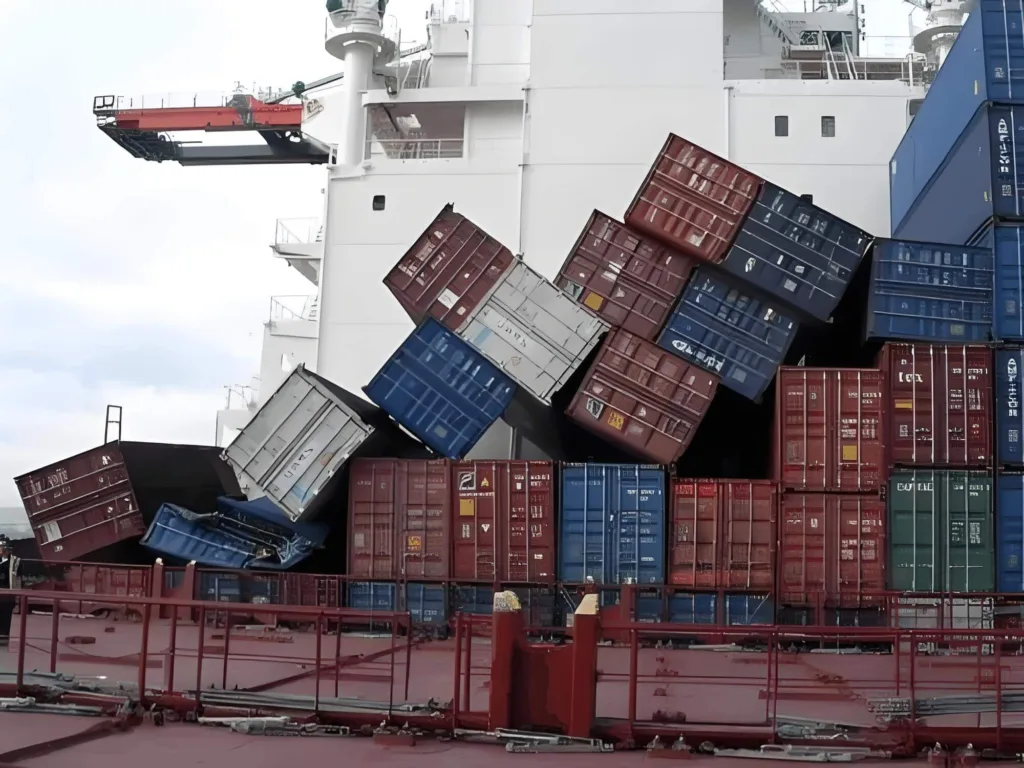
The most immediate risk is the loss of cargo. If containers are not properly secured, they can fall overboard during transit. This not only results in financial loss but can also cause serious maritime accidents.
For instance, containers that fall overboard can pose a navigation hazard for other vessels. They can also damage the marine environment, especially if they contain hazardous materials.
Moreover, shifting containers can destabilize the ship, increasing the risk of capsizing. This can put the lives of the crew and other sea-goers at risk.
Case Studies of Lashing Failures
There have been several incidents in the past where lashing failures have led to serious consequences.
One such incident occurred in 2013 when the container ship MOL Comfort broke in two in the Indian Ocean. The investigation showed that the lashing system couldn’t handle the forces of the high waves, resulting in the ship’s hull failure.
In another incident in 2018, the container ship YM Efficiency lost 81 containers overboard off the coast of Australia. The investigation found that the lashing arrangements were not adequate for the heavy weather conditions encountered by the ship.
These incidents highlight the critical importance of proper lashing in ensuring the safety and integrity of container ships.
Economic and Environmental Impacts
Inadequate lashing can also have significant economic and environmental impacts.
The loss of cargo can result in substantial financial losses for shipping companies and their customers. Moreover, cleaning up the debris from lost containers can be costly and time-consuming.
From an environmental perspective, containers that fall overboard can damage marine ecosystems. This is particularly concerning if the containers carry hazardous materials. Therefore, proper lashing is not just a matter of safety, but also of environmental responsibility.
Types of Lashing Equipment and Materials
Lashing equipment plays a crucial role in securing containers on a ship.

There are various types of lashing equipment and materials used in the shipping industry. These include lashing rods, turnbuckles, twist locks, lashing chains, and wire ropes, among others.
The choice of equipment depends on several factors. These include the type of cargo, the size and design of the ship, the expected weather conditions, and the shipping route.
Fixed and Loose Equipment
There are two main types of lashing equipment: fixed and loose.
Fixed equipment includes items that are permanently attached to the ship. These include lashing bridges, container guides, and stacking cones.
Loose equipment, on the other hand, includes items that can be moved and adjusted as needed. These include:
- Lashing rods
- Turnbuckles
- Twist locks
- Lashing chains
- Wire ropes
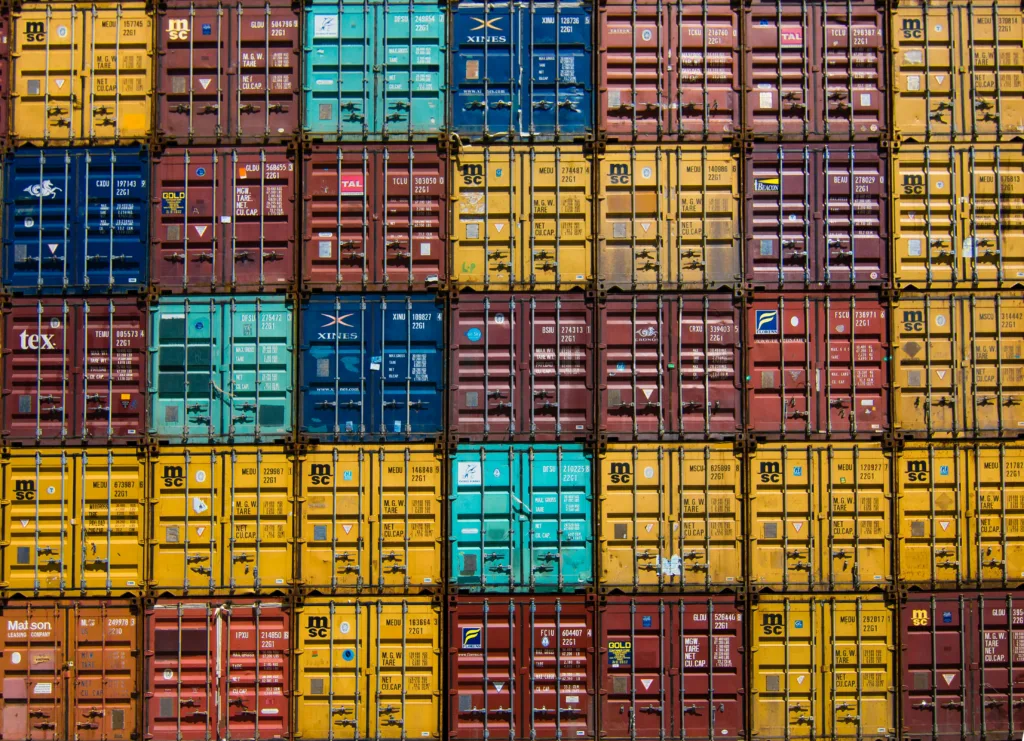
Both fixed and loose equipment play a critical role in securing containers. They work together to ensure that the containers remain stable and secure throughout the journey.
Advanced Lashing Technologies
In recent years, there has been significant advancement in lashing technologies.
For instance, there are now automated lashing systems that can secure containers more quickly and efficiently. These systems use advanced sensors and robotics to perform lashing tasks, reducing the need for manual labor.
There are also advanced lashing materials available. These include high-strength synthetic ropes and chains, which are lighter and more durable than traditional materials.
Moreover, there are now sophisticated software tools that can help in planning and optimizing lashing arrangements. These tools can simulate different scenarios and provide recommendations for the most effective lashing strategy.
These advancements have significantly increased safety and efficiency in the container lashing industry, driving innovation in the shipping sector.
Creating a Container Lashing Plan
A container lashing plan is a critical component of shipping operations.
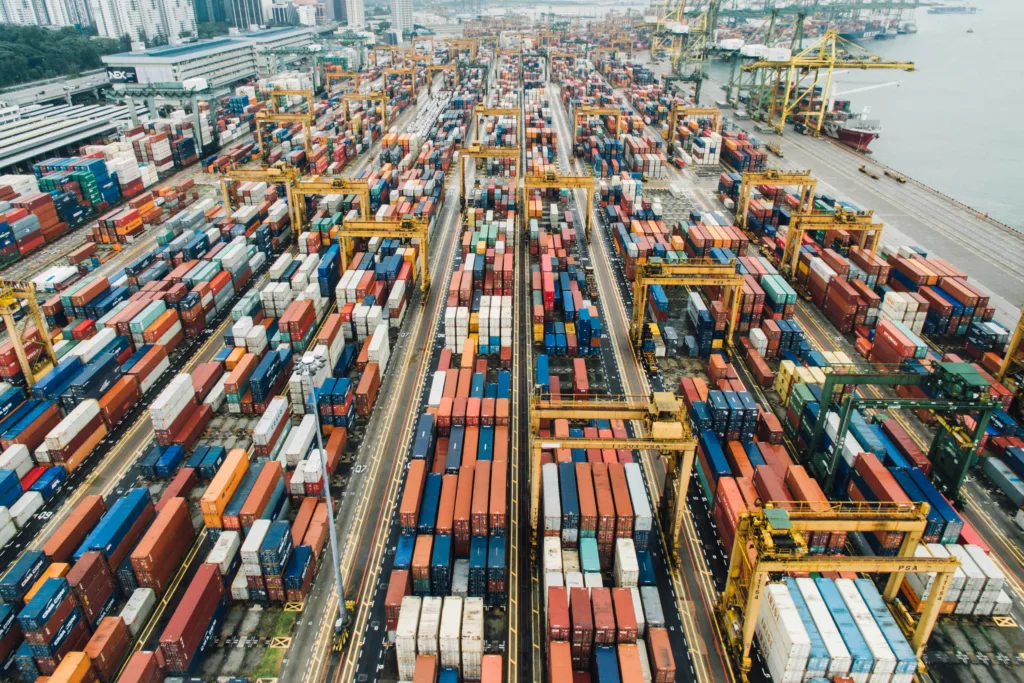
It outlines how containers will be secured on a ship. This plan is essential for ensuring the safety and stability of the cargo during transit.
An effective lashing plan can prevent cargo loss, minimize maritime accident risks, and enhance shipping efficiency.
Conversely, a poorly executed lashing plan can lead to serious consequences. These include cargo damage, ship imbalance, and even maritime accidents.
Therefore, creating a comprehensive and effective lashing plan is a critical task that requires careful planning and expertise.
Key Elements of a Lashing Plan
A container lashing plan should include several key elements.
First, it should specify the type and quantity of lashing equipment to be used. This includes both fixed and loose equipment, as well as any advanced lashing technologies.
Second, the plan should outline the arrangement of containers on the ship. This includes the stacking order, how containers are placed, and the use of special equipment like container guides or stacking cones.
Third, the plan should include a detailed description of the lashing procedures to be followed. This includes the sequence of lashing operations, the tensioning of lashing equipment, and the inspection and maintenance procedures.
Finally, the plan should consider the expected weather conditions and the shipping route. These factors can significantly affect the lashing requirements and should be taken into account when creating the plan.
The Importance of Load Distribution
Load distribution is a critical aspect of a container lashing plan.
The weight of the cargo should be evenly distributed across the ship. This helps to maintain the ship's balance and stability during transit.
Uneven load distribution can make the ship list or tilt, resulting in imbalance and increased risk of maritime accidents.
Therefore, the lashing plan should specify how the cargo will be distributed across the ship. This includes the placement of heavy containers, container stacking, and using dunnage to fill empty spaces.
In conclusion, a well-executed container lashing plan is essential for ensuring the safety and efficiency of shipping operations. It requires careful planning, expertise, and a thorough understanding of the principles of load distribution and container lashing.
Best Practices in Container Lashing
Container lashing is a complex process that requires a high level of skill and expertise.
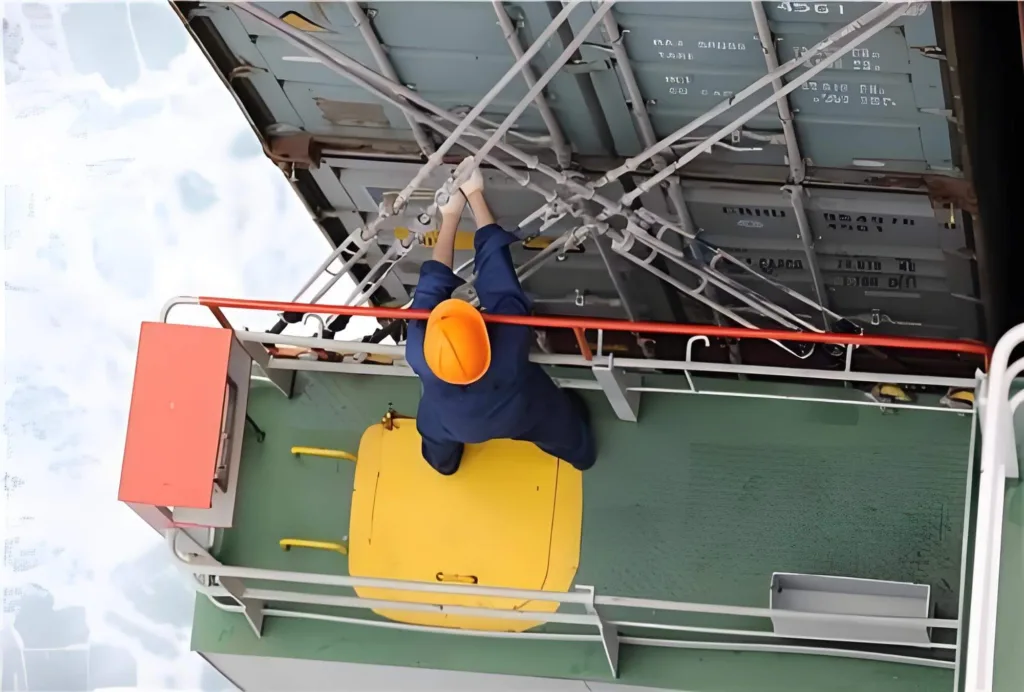
To ensure the safety and efficiency of shipping operations, it is important to follow best practices in container lashing.
These best practices involve training and certifying lashing crews, regularly maintaining and inspecting lashing equipment, and following international regulations and standards.
By adopting these best practices, shipping companies can minimize cargo loss, avoid maritime accidents, and boost overall efficiency.
Training and Certification for Lashing Crews
One of the key best practices in container lashing is proper training and certification for lashing crews.
- Crew members should be trained in the correct use of lashing equipment and materials.
- They should understand the principles of load distribution and the importance of maintaining the ship's balance and stability.
- They should also be trained in the procedures for inspecting and maintaining lashing equipment.
In addition to training, crew members should also be certified by a recognized maritime authority. This certification ensures that they have the necessary skills and knowledge to perform container lashing safely and effectively.
Regular Maintenance and Inspection
Another important best practice in container lashing is regular maintenance and inspection of lashing equipment.
- Lashing equipment should be inspected before and after each use to ensure that it is in good condition.
- Any damaged or worn-out equipment should be replaced immediately.
- Regular maintenance can help to extend the lifespan of lashing equipment and prevent equipment failure.
In addition to equipment maintenance, the lashing plan should also be regularly reviewed and updated. This ensures the plan stays effective and relevant by considering changes in cargo, shipping routes, and weather conditions.
In conclusion, following best practices in container lashing can significantly improve the safety and efficiency of shipping operations. It requires a commitment to training and certification, regular maintenance and inspection, and continuous improvement.
International Regulations and Standards
In the shipping industry, container lashing is governed by a set of international regulations and standards.
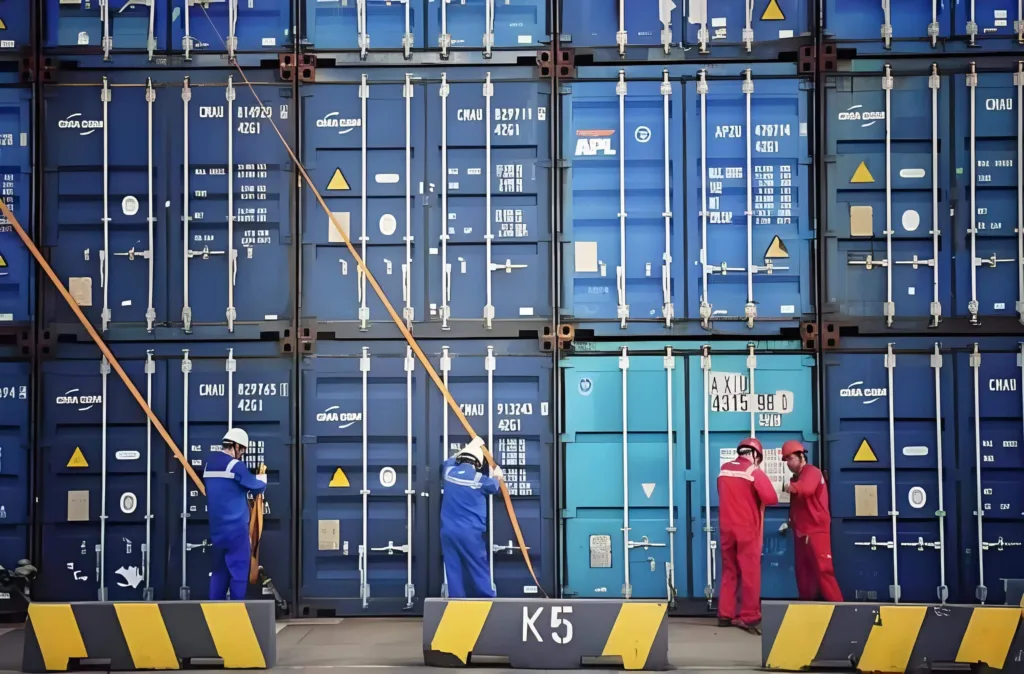
These regulations and standards are designed to ensure the safety and efficiency of shipping operations. They offer guidelines for using lashing equipment properly, creating lashing plans, and training and certifying lashing crews.
IMO Guidelines and SOLAS Convention
The International Maritime Organization (IMO) is the United Nations agency responsible for the safety and security of shipping.
The IMO has issued several guidelines on container lashing. These guidelines include topics like how to design lashing equipment, secure cargo, and train lashing crews.
Besides the IMO guidelines, the Safety of Life at Sea (SOLAS) Convention also includes rules on container lashing. The SOLAS Convention is an international treaty that sets fundamental safety standards for building, equipping, and operating merchant ships.
Compliance with the Cargo Securing Manual (CSM)
Another important standard in container lashing is the Cargo Securing Manual (CSM).
The CSM is a document that provides detailed instructions on how to lash and secure cargo on a ship. It includes the types of lashing equipment, how to lash different cargo, and how to inspect and maintain that equipment.
- All ships must have a CSM on board, and the procedures outlined in the CSM must be followed at all times.
- Failure to comply with the CSM can result in penalties, including fines and the detention of the ship.
In conclusion, compliance with international regulations and standards is a critical aspect of container lashing. It ensures the safety and efficiency of shipping operations and helps to prevent maritime accidents.
The Future of Container Lashing Systems
The future of container lashing systems is promising, with several innovations and trends shaping the industry.
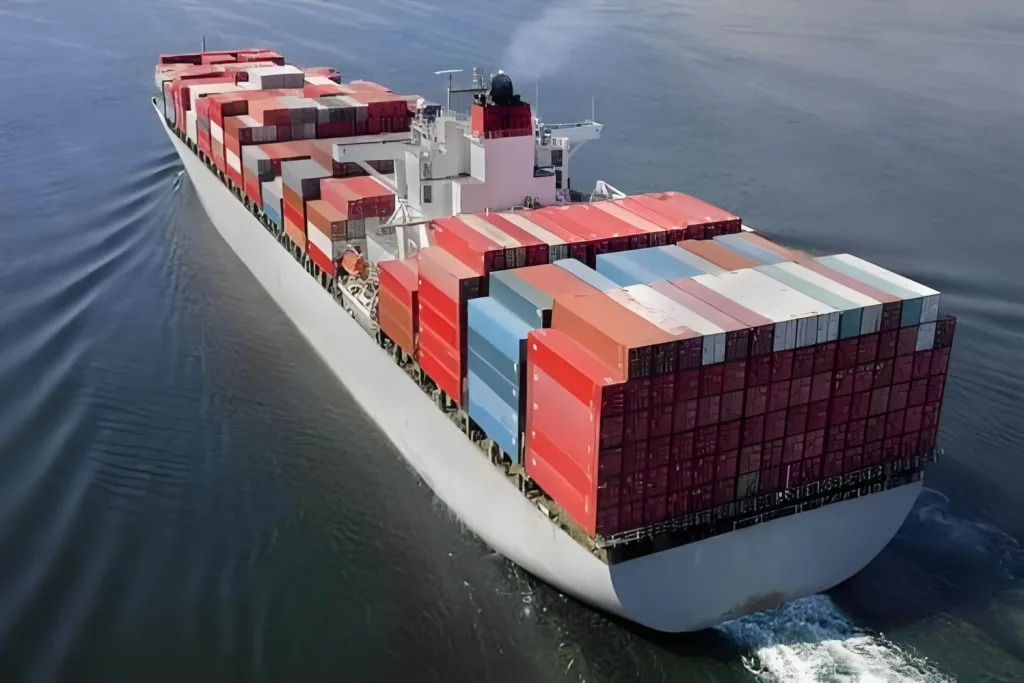
These advancements aim to improve the safety, efficiency, and environmental impact of shipping operations. They also seek to address the challenges and limitations of traditional lashing methods.
Innovations and Trends
One of the key trends in container lashing is the use of advanced materials. These materials are stronger, lighter, and more durable than traditional lashing materials. They can withstand harsh weather conditions and heavy loads, reducing the risk of lashing failures.
Another trend is the development of smart lashing systems. These systems use sensors and data analytics to monitor the condition of lashing equipment and the stability of cargo. They can spot problems fast and tell the crew right away, making lashing work safer and faster.
The Role of Automation and Real-Time Monitoring
Automation is playing an increasingly important role in container lashing. Automated lashing systems can perform lashing tasks faster and more accurately than human crews. They can also work in harsh weather conditions and during night shifts, increasing the productivity of shipping operations.
Real-time monitoring is another key feature of modern lashing systems. Using sensors and data analytics, these systems can track lashing tension, cargo movement, and the ship's stability. They can provide real-time alerts to the crew, allowing them to take corrective actions before a problem escalates.
In conclusion, the future of container lashing systems lies in the use of advanced materials, smart technologies, and automation. These innovations promise to enhance the safety, efficiency, and environmental performance of shipping operations.
Conclusion: The Critical Importance of Proper Lashing
In the complex world of shipping, the importance of proper lashing cannot be overstated. It is a critical aspect that ensures the safety and efficiency of maritime operations.
Proper lashing secures cargo, maintains the stability of the ship, and prevents accidents. It's not just about following regulations; it's a commitment to safety, efficiency, and environmental responsibility in the shipping industry.
The advancements in lashing systems and technologies are promising. They offer solutions to the challenges of traditional lashing methods and contribute to the improvement of shipping operations.
In conclusion, proper lashing is a critical aspect of shipping that requires attention, expertise, and continuous improvement. It is a key factor that determines the safety, efficiency, and success of maritime operations.